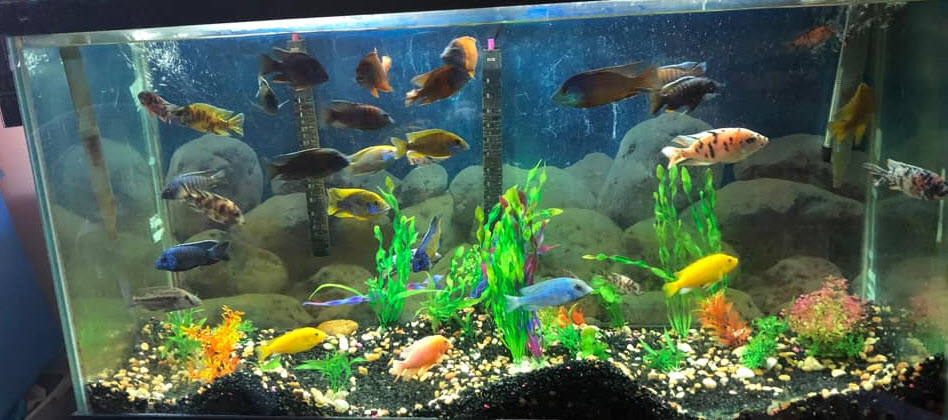
To control a severe algae outbreak in a fish only aquarium it is best to simply do some six to eight 50% water changes over the span of two days. Contrary to popular mythology, large water changes are perfectly natural (a fish swimming in a river has a water change every second) and harmless to fish. It does NOT “shock” them. Most fish deaths during water changes are due to two things: on municipal water it is most often a chlorine pulse and on well water it is most often lack of oxygen in the water.
Severe algae outbreaks in established “fish-only” tanks are most often caused by an excess of phosphorus in the water column. An excess of phosphorus can be from feeding too much, inadequate water changes, use of commercial compounds which lower pH (most pH lowering chemicals are phosphates), and phosphorus in the water supply. Nitrogen is also a factor but high nitrogen is inevitable in an aquarium with a heavy loading of fish so controlling nitrogen is harder than controlling phosphorus.
But note that like everything with algae, “it depends”. Dropping the phosphorus and nitrogen levels in a fish only aquarium will slow down algae growth but it will not stop it. One has to get below 0.050 ppm or 50 parts per billion in a fish only tank to really stop all algae. Since all fish food has phosphate in it that sort of drop is virtually impossible.
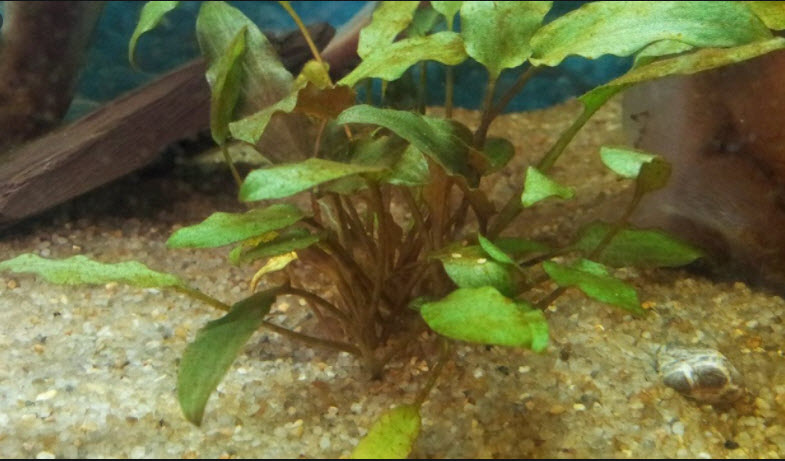
To illustrate, say we have a heavily stocked fifty gallon with 25 five inch African mbuna (56 grams metabolic weight each). We are feeding at a rate of 1.5% of total body weight per day. By dry weight, most fish foods are 1% phosphorus. In a fifty gallon aquarium one part per million is 0.18 grams. This becomes (56 x 25 x 0.015 x 0.01)/0.18 = 1.2 ppm per day being added. In turn this is 1.2 ppm divided by 0.05 ppm = 23 times more phosphorus being added per day than is required by algae.
Now if we have a lightly stocked tank then we only have 2.3 times more phosphorus being added per day than algae need. So one sees how impossible it becomes to ELIMINATE algae by controlling phosphate. But one can CONTROL algae by keeping phosphate low.
Note that some algae is inevitable in an aquarium. If you want a white Buddha to remain nice and white you will have to pull it out and bleach it every two weeks. I’m just too lazy for that. I just chose décor with a brown to green coloration where some brown and some green algae will just blend in.
Temperature
When it comes to algae, temperature is a two edged sword. Blue green algae is a bacteria. Bacteria love high temperatures. An outbreak of blue green algae (cyanobacteria) almost always occurs in aquariums over 80 degrees. But then blackbeard algae loves lower temperatures. The ideal temperature for plants and fish seems to be about 76 to 79 degrees F, 24 to 26 degrees C. For a more in depth discussion of temperature go to this link:
4.2. Aquarium Temperatures
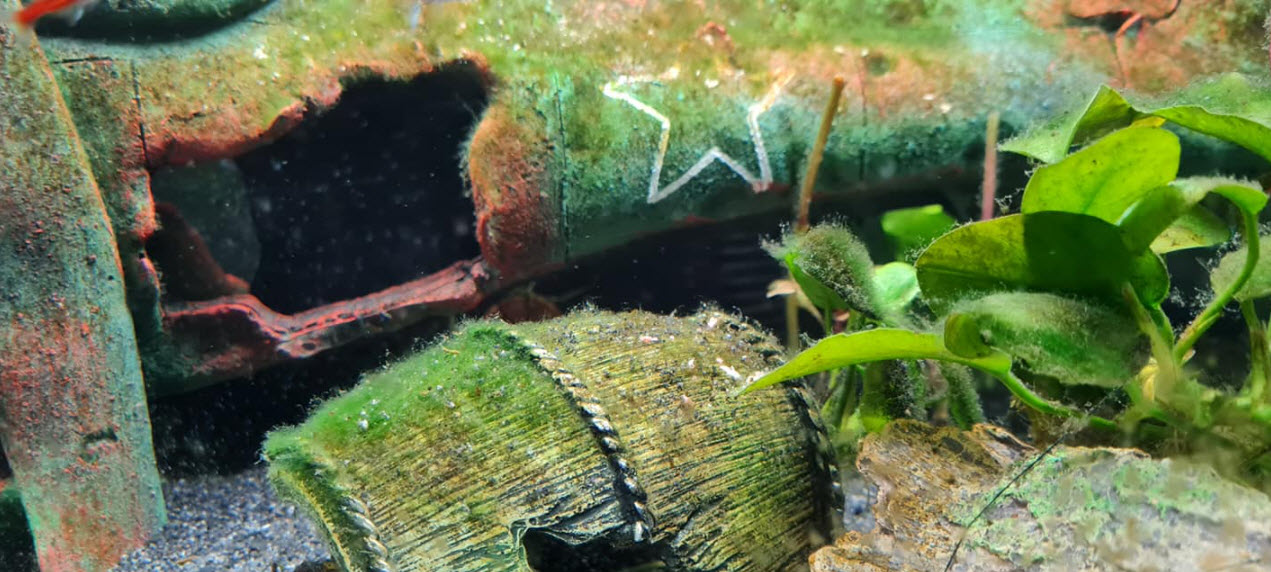
Lighting
It is often helpful in an aquarium with no plants to drop the lighting on to just when want to admire or feed the fish. This starves the algae. Note it won’t affect brown algae as much as it will affect green and red algae and cyanobacteria. Algae, like all plants, love sunlight. Aquariums with only fish which have sunlight from a window, even indirect sunlight, will typically have big problems with algae.
Brown algae love blue light. So aquarium lights which combine blue lights with white lights can be a problem. Note that white, crimson and blue LEDs in combination don’t seem to have the same issues.
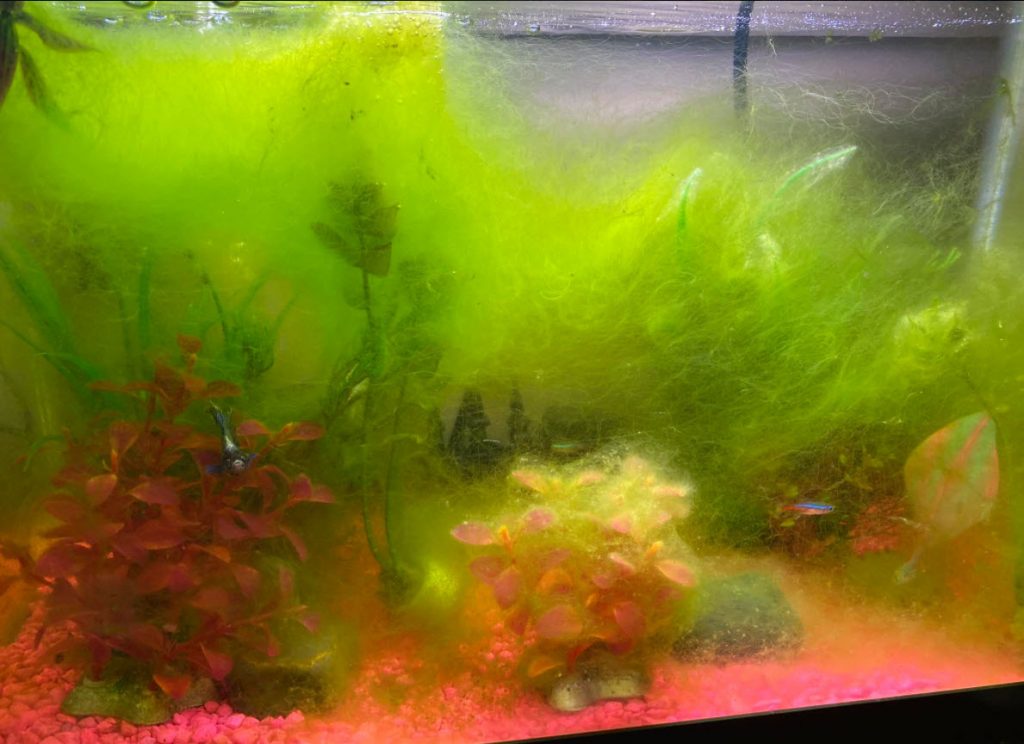
Monte Carlo Approach
A “Monte Carlo” approach is just trying a lot of different things to narrow in on what affects the particular strain of algae. It is paramount that one remember that SOME algae is beneficial in the aquarium and should be simply left alone. IF and only IF the algae outbreak is just too much, just change a single parameter at a time and see what happens over the course of two to six weeks.
With a largely fish tank go up and down with one variable at a time and see what happens over a time span of a month or so. Do this with:
- Multiple 95% to 100% water changes
- Take the amount of lighting way down, only turn it on when feeding or viewing the fish
- Lower the temperature
- Add some easy plants like Java Fern or Amazon Sword and see which ones, if any, survive
- Add some algae eaters
Typically with a fish only aquarium, just doing a lot of water changes will solve the problem.
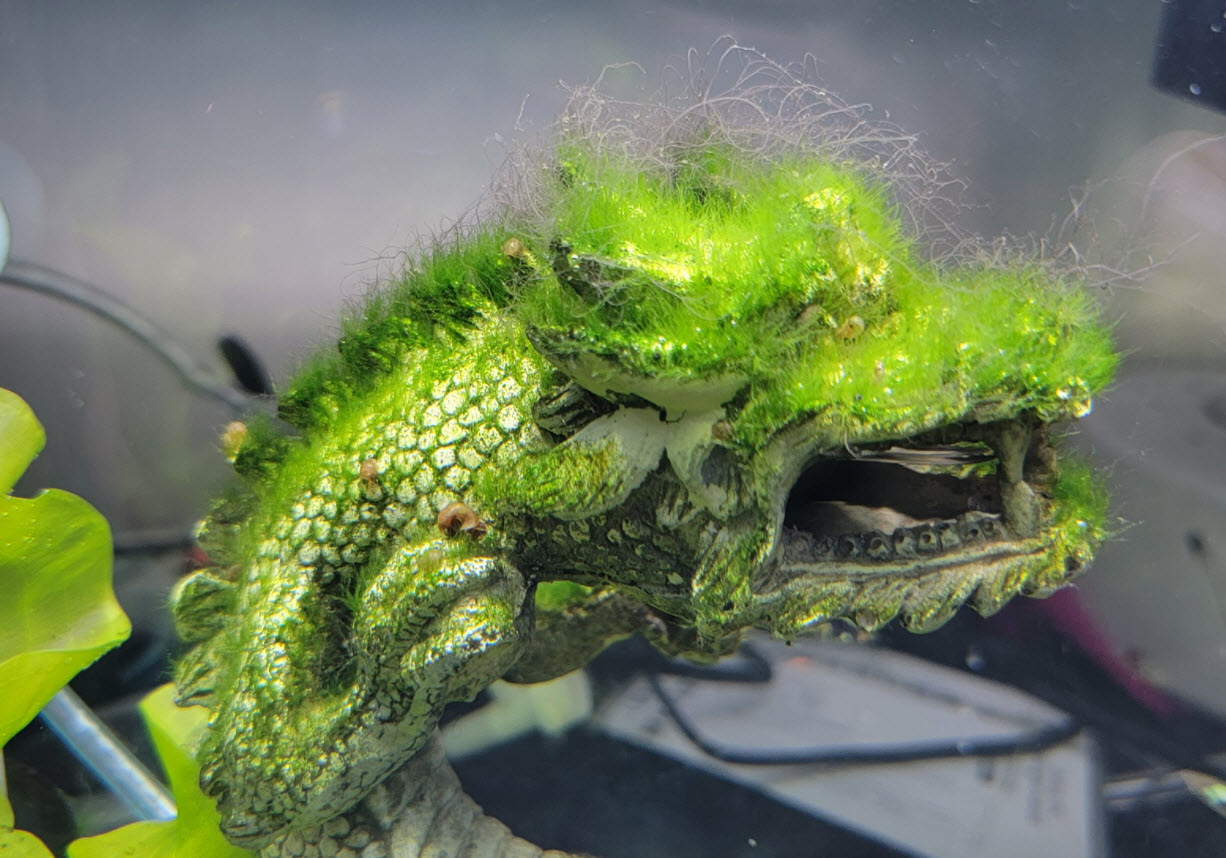
More Information on Controlling Algae
There is a lot more information on how to control algae in these links:
16.2. Controlling Algae in the Aquarium
16.2.2. Controlling Algae in the “High-Tech” Planted Aquarium
16.2.3. Controlling Algae in the “Low-Tech” Planted Aquarium
16.2.4. Algae Eaters
16.2.5. The Algae “War”
16.2.6. Chemical Control of Aquarium Algae
Return to Algae Menu
.
Aquarium Science Website
The chapters shown below or on the right side in maroon lead to close to 400 articles on all aspects of keeping a freshwater aquarium. These articles have NO links to profit making sites and are thus unbiased in their recommendations, unlike all the for-profit sites you will find with Google. Bookmark and browse!
.

Leave a Reply